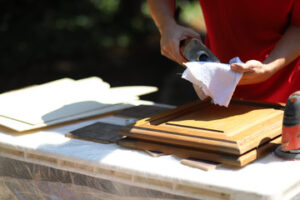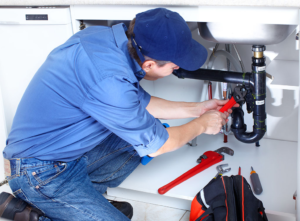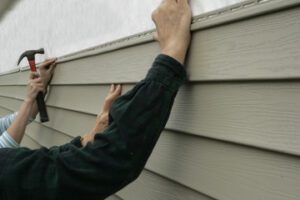High ticket sales involve products or services that have a high value and require a longer, more personalized sales process. These sales can lead to higher profit margins than low-ticket items but also come with unique challenges.
The key to successfully closing high-ticket sales is building trust and credibility. This can be done by using testimonials, case studies, expert endorsements, and Grit And Gains Review.

Know Your Product
High ticket sales involve premium products and services with a higher price point, targeting customers willing to invest in exceptional value, quality, and exclusivity. They typically offer higher profit margins and longer sales cycles than lower-priced products, and they also foster strong client loyalty and repeat business.
To successfully sell high-ticket items, you must understand your product and know how it addresses a specific client’s needs. This starts with conducting research, including surveys and social listening tools, to learn more about your target audience’s pain points, desires, and motivations. Once you’ve done this, you can develop customer personas and use them to inform your marketing strategy.
You also need to be able to explain the value of your product or service, demonstrating why it is worth the investment. The best way to do this is to frame the discussion around the buyer’s pain points and what they stand to gain by investing in your solution.
When a client is considering making a large purchase, it’s important to discuss money early in the sales process. This allows you to build monetary value in their mind about what a solution to their problems will mean for them, and it makes asking for the sale easier.
Another key strategy for selling high-ticket items is to provide exceptional customer service. This includes building trust and credibility through frequent communication with your prospects, offering personalized service to each individual, and providing follow-up support after their purchase. This ensures that your clients are satisfied with their experience and encourages them to refer you to their network. This is known as the community flywheel model, and it’s an essential element of converting high-ticket sales.
Know Your Audience
High-ticket items often represent significant investments for your customers, making it essential to know them well. Understanding their needs, pain points, and goals can help you build trust and credibility, which will make your product irresistible.
Knowing your audience also allows you to craft a value proposition that explains why your product is worth the premium price tag. It should highlight your unique benefits, exceptional quality, and the specific problem it solves for the buyer. In addition, it should help you differentiate your product from similar offerings in the market.
To learn more about your audience, start by reviewing any current data and analytics you have. This can include any research or analysis your company has conducted since it started operations, as well as customer feedback and engagement.
Additionally, you can analyze search data to understand what your audience is searching for online. For example, if you sell ski gear and equipment, you can use search data to identify trends such as when people are looking for snow gear and where they’re located.
You can then tailor your marketing efforts to reflect these insights. For instance, you can use a targeted social media campaign to reach people in the areas where you’re most likely to find potential clients.
You can also use this information to create a customer service strategy that meets the unique needs of your high-ticket buyers. For example, you can offer live, on-call video support through a tool like ServiceBell to enhance the client experience and build stronger relationships. This will increase your client retention and boost revenue over time. By taking these steps, you can master high-ticket sales and grow your business to new heights.
Know Your Competition
High ticket sales are high-reward, low-volume forms of selling that can be incredibly lucrative for the right people. They typically involve products or services that are premium in nature, such as luxury goods, boutique consulting services, concierge healthcare plans, and custom software. These offerings can be difficult to sell due to their higher price tags, but by using a consultative approach and leveraging the power of social proof, sellers can successfully close these lucrative deals.
Aside from providing high returns, high ticket sales also bring stability to a business model by reducing reliance on individual transaction-based revenue streams. Furthermore, focusing on a few high-end items allows businesses to streamline product development efforts, resulting in better products and reduced expenses over time.
When making high-ticket sales, it is important to know your competition. This will allow you to better understand how your products or services differ from the competition and position them as a superior option. For example, you might highlight the unique benefits of your product or service, its exceptional quality, or how it solves a specific problem for the customer. Additionally, you may want to create a sense of exclusivity or urgency by limiting the number of available products or offering a limited-time VIP experience.
To maximize sales, it is essential to have a clear understanding of your client’s needs and objectives. This will help you craft solutions that align perfectly with their goals, ensuring they perceive your high-ticket offer as a worthwhile investment. Moreover, it is important to follow up with your clients after their purchase to ensure they are satisfied and can offer referrals or repeat business. This customer-focused approach is what sets high-ticket sales apart from the rest.
Know Your Pricing Strategy
High-ticket sales involve selling premium products and services that are expensive but offer greater value to the client. They typically require a longer sales cycle and more personalized customer service, as well as a deep understanding of the client’s needs and motivations. This type of marketing is ideal for companies looking to grow their revenue and brand reputation through high-value clients.
The key to selling a high-ticket item is to focus on building rapport with the client and asking open-ended questions that will allow you to dive deep into their pain points and goals. This will help you identify any potential objections they may have to your high-ticket product or service, and show them that your solution will solve their problems in a way that no one else can.
Another great strategy for selling high-ticket items is to use bundle pricing, which involves offering a package of multiple products or services at a lower overall price than if each service was sold separately. This is often seen in insurance offerings, such as auto and home insurance packages, or by cable and phone providers, who are now offering “bundles” of their services for a discounted rate.
Prioritizing high-ticket sales is important for businesses because it enables them to generate higher profits per sale, despite having fewer total transactions. This is especially helpful for companies that rely on service-based models, such as law firms or healthcare practices, and who have limited budgets. In addition, high-ticket sales can also provide a more stable source of revenue, as they are less susceptible to fluctuations in the economy and global events. High-ticket sales can also help businesses build strong relationships with their clients, which leads to loyalty and repeat business.
Know Your Sales Process
High ticket sales are the result of offering a premium product or service. They can also help foster deeper relationships with your clients, as the higher price point cultivates a sense of exclusivity and makes customers feel valued. As a result, they are more likely to be repeat customers and recommend you to their networks.
One of the most important aspects of high-ticket sales is understanding your client’s pain points and how your service or product can solve them. This will enable you to position your product or service as an irresistible value proposition and help you overcome any objections your prospects may have.
Another way to increase your chances of closing high-ticket sales is by providing exceptional customer service. This will make your customers feel valued and cared for, which will increase their trust in you as a professional. Additionally, it will show them that you are invested in their success and that you understand their unique needs and goals.
Finally, it is important to have a solid marketing strategy that focuses on quality lead generation. This will ensure that you have a steady stream of qualified leads to convert into customers. It is also essential to have a system in place that tracks the entire sales process from start to finish, so you can measure your performance and optimize your results.
Mastering high-ticket sales can be a daunting task, but with the right strategies and tools, it is possible to scale your business and reach new revenue records without having to hire a dedicated team. By focusing on the key elements of high-ticket sales, including knowing your audience, your competition, and your sales process, you can build a sustainable business model that will allow you to achieve financial independence and leave a lasting impact on your customers.








